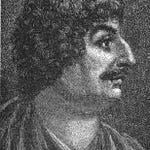A crucial part of close reading poetry is developing your ear for verse, for the marriage of sound and meaning. The great critic of this, both in practical and theoretical terms, is Robert Frost, perhaps my favourite poet. In a letter of 1915 to his friend Sidney Cox (professor and critic), Frost wrote:
The sentence is everything—the sentence well imagined. See the beautiful sentences in a thing like Wordsworth’s To Sleep or Herrick’s To Daffodils.
Remember, a certain fixed number of sentences (sentence sounds) belong to the human throat just as a certain fixed number of vocal runs belong to the throat of a given kind of bird. They are fixed, I say. Imagination cannot create them. It can only call them up. It can only call them up for those who write with their ear on the speaking voice. We will prove it out of the Golden Treasury someday.
Who knows which of the three poems Wordsworth wrote called ‘To Sleep’ Frost could have meant. If we take the Golden Treasury as our guide (and Frost loved the Golden Treasury, as well as the Oxford Book of Victorian Verse) then this is the version he meant.
A flock of sheep that leisurely pass by
One after one; the sound of rain, and bees
Murmuring; the fall of rivers, winds and seas,
Smooth fields, white sheets of water, and pure sky:I've thought of all by turns, and yet do lie
Sleepless; and soon the small birds' melodies
Must hear, first utter'd from my orchard trees,
And the first cuckoo's melancholy cry.Even thus last night, and two nights more I lay,
And could not win thee, Sleep! by any stealth:
So do not let me wear to-night away:Without Thee what is all the morning's wealth?
Come, blesséd barrier between day and day,
Dear mother of fresh thoughts and joyous health!
I will come to Frost’s “sentence sounds” in this poem shortly. First, let’s look at some of the features of this poem.
To begin with, it is a sonnet. Fourteen lines. Octet (eight lines) then sestet (six lines) with a volta or turn in between. If you want to know more about sonnets, I did a close reading of Robert Hayden, where I look briefly, at the history of the form. You might think sonnets are for love poems, and they are, but they became a hugely flexible form that were used for religion, death, and many other topics, including sleep. In another sleep sonnet Wordsworth begins: “Fond words have oft been spoken to thee, Sleep!” The most well-known is Sidney’s sonnet “Come sleep, O sleep, the certain knot of peace.” Perhaps that will be a future subject for close reading.
Second, what stands out to me are Wordsworth’s three-part lines.










